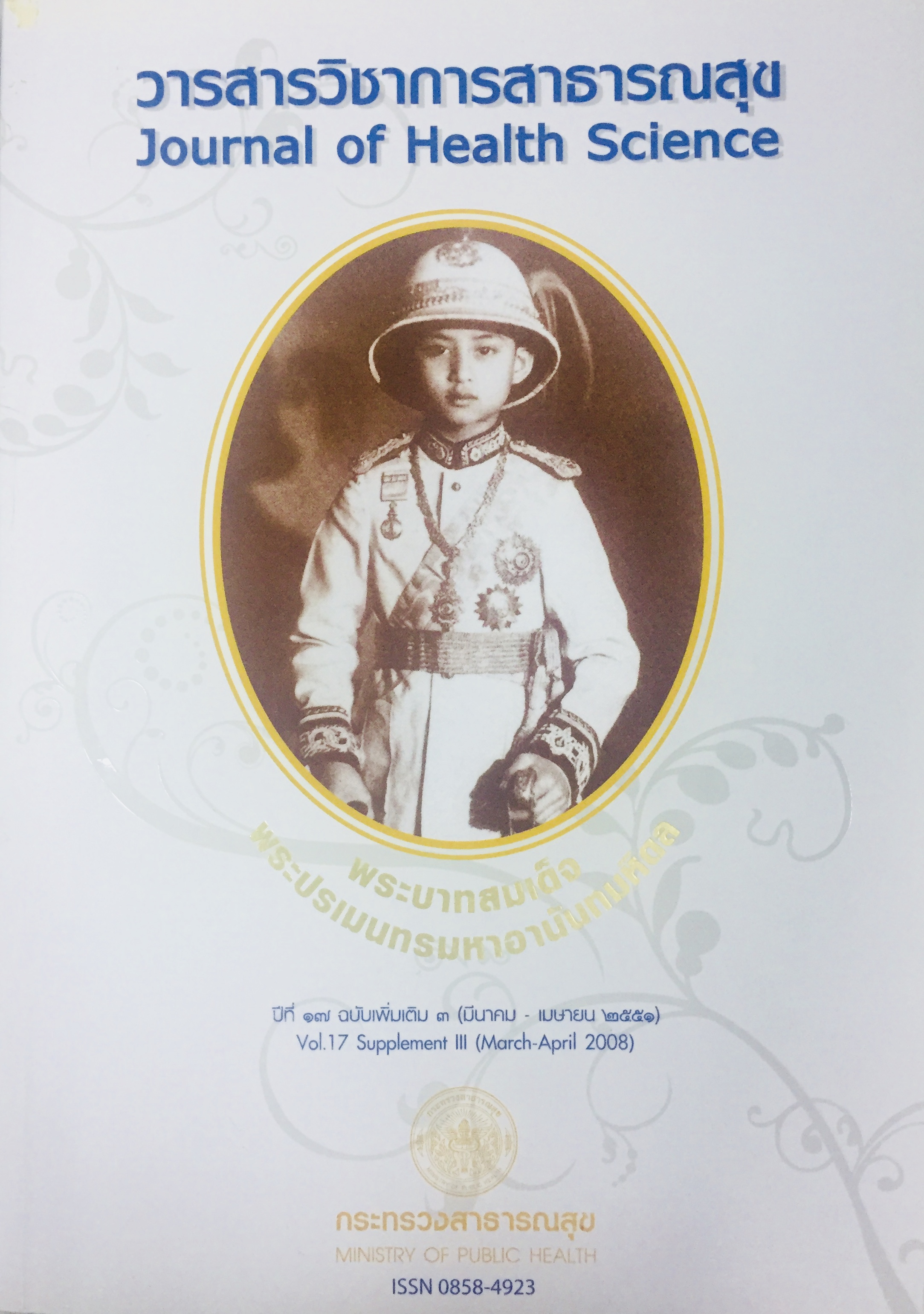Risk Factors of Dengue Shock Syndrome in Kalasin Hospital
Keywords:
risk factors, dengue fever, dengue hemorrhagic fever, dengue shock syndromeAbstract
Dengue infection, the most common mosquito-borne viral diseases, is one of the important health problems inThailand. It has been identified as clinical entity since 1789. In patients with dengue shock syndrome, delay in detection and management usually lead to high morbidity and mortality from prolonged shock or massive bleeding. The severity of the disease can be modified by early diagnosis and adequate replacement of plasma loss. Hence it would be of value to identify risk factors that can predict shock in dengue illness. A retrospective analytical study was done by reviewing the charts of all dengue patients admitted to Kalasin hospital during 2004-2006. Clinical and laboratory data of dengue fever (DF), dengue hemorrhagic fever (DHF) and dengue shock syndrome (DSS) were collected and compared. One Way ANOVA was used to compare between the 3 groups and chi-square or Fisherีs exact test was used to compare between the 2 groups and the results were also reported as Odd ratio and 95%Confidence Interval. There were 247 cases admitted: 117 DF (47.4%), 107 DHF (43.3%) and 23 DSS (9.3%). Age, sex, fever, retro orbital pain, abdominal pain, petechiae were not significantly different in comparisons between the DHF and DSS patients. Risk factors of DSS were rash, gum bleeding, melena hematemesis, platelet count less than 50,000 cell/mm3 and hemoconcentration more than 22 percent from baseline. DHF patients with risks should be closely observed for early signs of shock. Adequate fluid replacement can prevent the progression of shock which results in less complications and lower case fatality rate in DHF patients.
Downloads
Downloads
Published
How to Cite
Issue
Section
License
Copyright (c) 2018 Journal of Health Science

This work is licensed under a Creative Commons Attribution-NonCommercial-NoDerivatives 4.0 International License.







